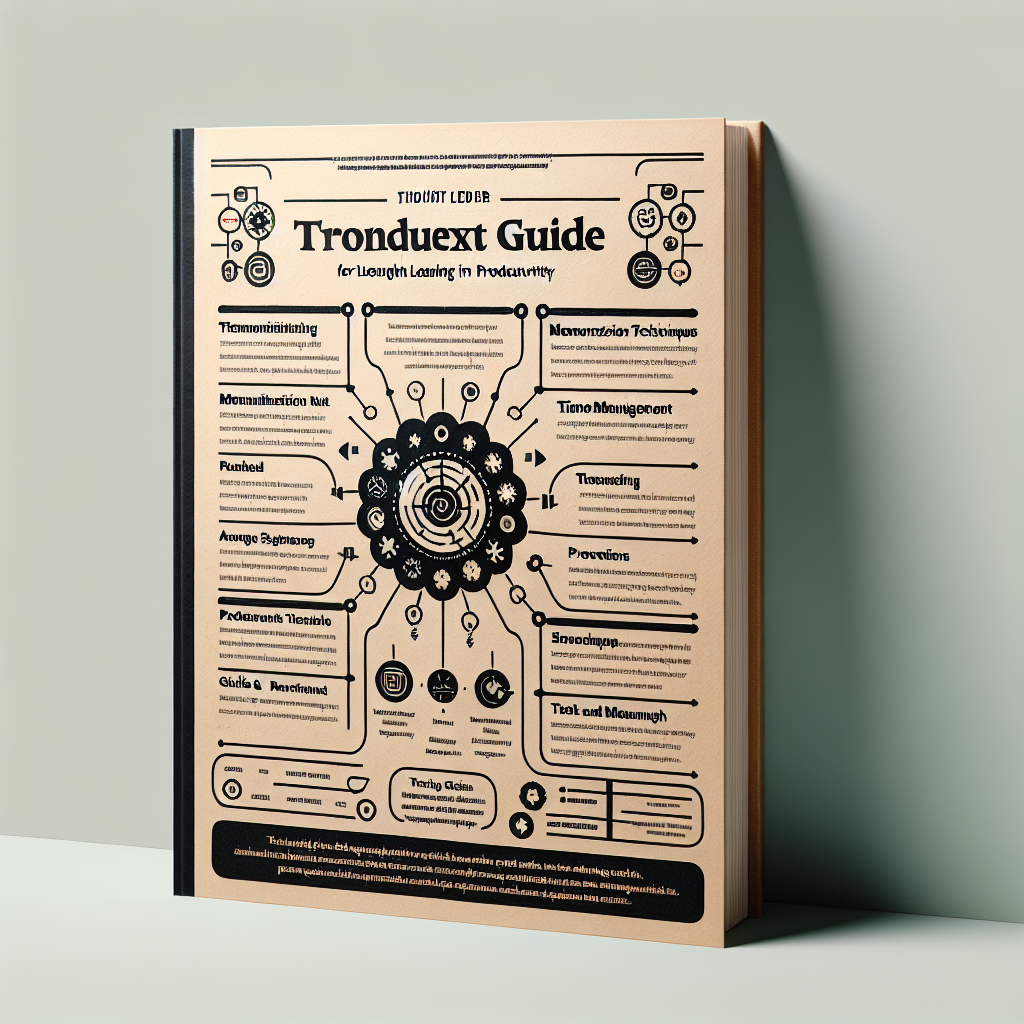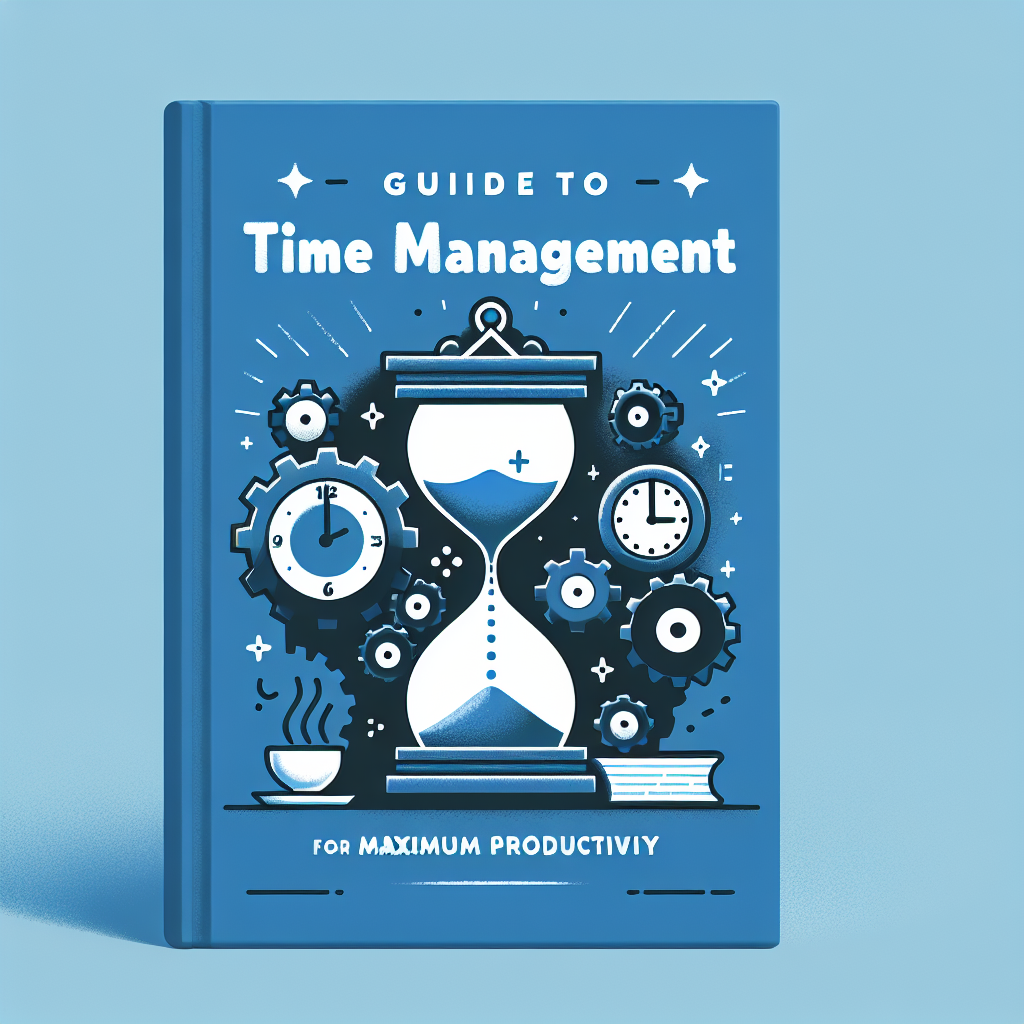Understanding the Concepts in Tim Ferriss’ Tribe of Mentors
Key Takeaways from Tim Ferriss’ Tribe of Mentors
Tim Ferriss’ ”Tribe of Mentors” is a treasure trove of wisdom, offering insights from some of the world’s most successful and influential individuals. The book is a compilation of advice, life lessons, and practical tips from a diverse group of mentors, each sharing their unique perspectives on achieving success and finding fulfillment. As you delve into the key takeaways from this remarkable collection, you’ll discover a wealth of knowledge that can be applied to various aspects of life.
One of the central themes in ”Tribe of Mentors” is the importance of asking the right questions. Ferriss emphasizes that the quality of our lives is often determined by the quality of the questions we ask ourselves and others. By posing thoughtful and probing questions, we can gain deeper insights and uncover new opportunities for growth. This idea is echoed by many of the mentors in the book, who share their own experiences of how asking the right questions has led to breakthroughs in their personal and professional lives.
Another significant takeaway from the book is the value of embracing failure and learning from it. Many of the mentors highlight the importance of viewing failure not as a setback, but as a valuable learning experience. They encourage readers to adopt a growth mindset, where challenges and failures are seen as opportunities to learn and improve. This perspective can help individuals build resilience and develop the perseverance needed to achieve their goals.
In addition to embracing failure, the mentors also stress the importance of taking action and being proactive. They emphasize that success often comes from consistently taking small steps towards a larger goal. By breaking down big objectives into manageable tasks and taking consistent action, individuals can make steady progress and eventually achieve their desired outcomes. This approach is particularly useful for those who may feel overwhelmed by the enormity of their goals.
Moreover, the book underscores the significance of cultivating strong relationships and building a supportive network. Many of the mentors attribute their success to the connections they’ve made and the support they’ve received from others. They advise readers to invest time and effort in building meaningful relationships, as these connections can provide valuable guidance, encouragement, and opportunities. This principle is especially relevant in today’s interconnected world, where collaboration and networking can open doors to new possibilities.
Another key takeaway from ”Tribe of Mentors” is the importance of maintaining a healthy work-life balance. The mentors share various strategies for managing stress, prioritizing self-care, and finding time for activities that bring joy and fulfillment. They emphasize that achieving success should not come at the expense of one’s well-being. By incorporating practices such as mindfulness, exercise, and hobbies into their routines, individuals can maintain a balanced and fulfilling life.
Furthermore, the book highlights the power of continuous learning and personal development. Many of the mentors are avid readers and lifelong learners, constantly seeking new knowledge and skills. They encourage readers to adopt a similar mindset, emphasizing that personal growth is an ongoing journey. By staying curious and open to new experiences, individuals can continue to evolve and adapt in an ever-changing world.
In conclusion, ”Tribe of Mentors” offers a wealth of valuable insights and practical advice from some of the world’s most accomplished individuals. By embracing the key takeaways from the book—asking the right questions, learning from failure, taking action, building strong relationships, maintaining work-life balance, and committing to continuous learning—readers can enhance their personal and professional lives. Tim Ferriss’ compilation serves as a powerful reminder that success and fulfillment are within reach for those who are willing to learn, grow, and take action.
The Importance of Mentorship in Personal Growth
In ”Tribe of Mentors,” Tim Ferriss delves into the profound impact that mentorship can have on personal growth. By compiling insights from a diverse group of successful individuals, Ferriss underscores the importance of learning from those who have already navigated the paths we aspire to tread. This collection of wisdom serves as a testament to the transformative power of mentorship, illustrating how guidance from experienced mentors can accelerate our journey toward achieving our goals.
One of the key takeaways from Ferriss’ work is the idea that mentorship is not a one-size-fits-all concept. Different mentors can offer unique perspectives and advice tailored to various aspects of our lives. For instance, a mentor in the professional realm might provide career-specific guidance, while a personal mentor could offer insights into maintaining a healthy work-life balance. By seeking out mentors in different areas, we can gain a more holistic understanding of what it takes to succeed and thrive.
Moreover, Ferriss emphasizes the value of asking the right questions. The mentors featured in ”Tribe of Mentors” often highlight the importance of curiosity and the willingness to seek knowledge. By asking thoughtful questions, we can uncover deeper insights and learn more effectively from our mentors. This approach not only helps us gain valuable information but also fosters a sense of connection and mutual respect between mentor and mentee.
Another significant aspect of mentorship discussed in the book is the role of vulnerability. Many of the mentors share personal stories of failure and struggle, demonstrating that even the most successful individuals face challenges. This openness helps to demystify the notion of success, making it more attainable for those who are still on their journey. By understanding that setbacks are a natural part of growth, we can develop resilience and a more realistic perspective on our own progress.
In addition to personal anecdotes, ”Tribe of Mentors” also offers practical advice on how to find and approach potential mentors. Ferriss suggests looking for individuals who embody the qualities and achievements we admire, and then reaching out with genuine curiosity and respect. Building a mentor-mentee relationship requires effort and sincerity, but the rewards can be immense. A good mentor can provide not only guidance but also encouragement and support, helping us to stay motivated and focused on our goals.
Furthermore, the book highlights the reciprocal nature of mentorship. While mentees benefit from the wisdom and experience of their mentors, mentors also gain from the fresh perspectives and enthusiasm of their mentees. This dynamic creates a mutually beneficial relationship that fosters growth and learning on both sides. By engaging in this exchange, we can contribute to a culture of continuous improvement and shared success.
Ultimately, ”Tribe of Mentors” serves as a powerful reminder of the importance of mentorship in personal growth. Through the stories and advice of accomplished individuals, Ferriss illustrates how mentorship can help us navigate the complexities of life and achieve our aspirations. By seeking out mentors, asking insightful questions, embracing vulnerability, and fostering reciprocal relationships, we can unlock our full potential and create a more fulfilling and successful life.
Strategies for Effective Learning from Mentors
In ”Tribe of Mentors,” Tim Ferriss curates a collection of wisdom from some of the world’s most successful individuals, offering readers a treasure trove of insights on various aspects of life, including strategies for effective learning from mentors. One of the key takeaways from the book is the importance of asking the right questions. Ferriss emphasizes that the quality of the questions you ask can significantly influence the quality of the answers you receive. By posing thoughtful, open-ended questions, you can gain deeper insights and more actionable advice from your mentors. This approach not only shows respect for their time and expertise but also demonstrates your genuine interest in learning and growing.
Another crucial strategy highlighted in the book is the value of active listening. When engaging with a mentor, it is essential to be fully present and attentive. This means putting away distractions, maintaining eye contact, and showing that you are genuinely interested in what they have to say. Active listening also involves reflecting on their words and asking follow-up questions to clarify any points of confusion. By doing so, you can ensure that you fully understand their advice and can apply it effectively in your own life.
In addition to asking the right questions and practicing active listening, Ferriss underscores the importance of taking action on the advice you receive. It is not enough to simply absorb information; you must also be willing to implement it. This requires a proactive mindset and a willingness to experiment with new ideas and approaches. By taking small, incremental steps, you can gradually incorporate your mentor’s guidance into your daily routine and see tangible results over time. Moreover, this iterative process allows you to refine your strategies and adapt them to your unique circumstances.
Furthermore, Ferriss highlights the significance of maintaining a growth mindset. This concept, popularized by psychologist Carol Dweck, involves viewing challenges and setbacks as opportunities for learning and growth rather than as insurmountable obstacles. By adopting a growth mindset, you can approach your interactions with mentors with an open mind and a willingness to learn from both successes and failures. This attitude not only fosters resilience but also encourages continuous improvement and personal development.
Another valuable lesson from ”Tribe of Mentors” is the importance of building a diverse network of mentors. Rather than relying on a single individual for guidance, Ferriss advocates for seeking out multiple mentors with different areas of expertise. This approach allows you to gain a broader perspective and access a wider range of knowledge and experiences. By learning from a diverse group of mentors, you can develop a more well-rounded understanding of various topics and enhance your ability to navigate complex challenges.
Lastly, Ferriss emphasizes the importance of gratitude and reciprocity in mentor-mentee relationships. Expressing appreciation for your mentor’s time and guidance not only strengthens your relationship but also fosters a positive and supportive dynamic. Additionally, finding ways to give back, whether by sharing your own insights or offering assistance in other areas, can create a mutually beneficial relationship that extends beyond the traditional mentor-mentee dynamic.
In conclusion, ”Tribe of Mentors” offers a wealth of strategies for effective learning from mentors, including asking the right questions, practicing active listening, taking action, maintaining a growth mindset, building a diverse network, and fostering gratitude and reciprocity. By incorporating these principles into your interactions with mentors, you can maximize the value of their guidance and accelerate your personal and professional growth.
How to Apply Advice from Tribe of Mentors in Daily Life
Tim Ferriss’ ”Tribe of Mentors” is a treasure trove of wisdom, offering insights from some of the world’s most successful individuals. Applying the advice from this book in daily life can seem daunting, but with a few practical steps, it becomes manageable and highly beneficial. The first step is to recognize that the book is not meant to be read cover-to-cover in one sitting. Instead, it is designed to be a reference guide, where you can dip in and out, finding the advice that resonates most with your current situation.
One of the key takeaways from ”Tribe of Mentors” is the importance of asking better questions. Many of the mentors emphasize that the quality of your life is determined by the quality of the questions you ask. For instance, instead of asking, ”Why is this happening to me?” you might ask, ”What can I learn from this experience?” This shift in perspective can lead to more constructive and empowering answers, helping you navigate challenges more effectively.
Another practical piece of advice is the concept of micro-habits. Many mentors in the book advocate for small, incremental changes rather than drastic overhauls. For example, if you want to start meditating, begin with just one minute a day. This makes the habit easier to stick with and gradually builds a foundation for more extended practice. Over time, these micro-habits can lead to significant improvements in your overall well-being.
Time management is another crucial area where the book offers valuable insights. Several mentors suggest techniques like time-blocking, where you allocate specific chunks of time for different tasks. This method helps in maintaining focus and reducing the inefficiencies that come with multitasking. Additionally, the practice of setting clear boundaries, such as not checking emails after a certain hour, can greatly enhance your productivity and work-life balance.
Networking and building relationships are also recurring themes in ”Tribe of Mentors.” The mentors often highlight the importance of surrounding yourself with people who inspire and challenge you. One actionable tip is to reach out to someone you admire and ask for advice or mentorship. While this may seem intimidating, many successful individuals are more approachable than you might think. A well-crafted, sincere message can open doors to valuable connections and opportunities.
Moreover, the book underscores the significance of self-care and mental health. Many mentors share their routines for maintaining physical and emotional well-being, such as regular exercise, adequate sleep, and mindfulness practices. Incorporating these routines into your daily life can help you stay grounded and resilient, especially during stressful times.
Financial wisdom is another area covered extensively in ”Tribe of Mentors.” Practical advice includes living below your means, investing in experiences rather than material possessions, and understanding the power of compound interest. By adopting these principles, you can achieve greater financial stability and freedom, allowing you to focus on what truly matters to you.
Lastly, the book encourages a mindset of continuous learning and curiosity. Many mentors stress the importance of reading, taking courses, and seeking new experiences to keep growing personally and professionally. Embracing this mindset can lead to a more fulfilling and dynamic life, where you are constantly evolving and adapting to new challenges.
In conclusion, ”Tribe of Mentors” offers a wealth of practical advice that can be seamlessly integrated into daily life. By asking better questions, adopting micro-habits, managing time effectively, building meaningful relationships, prioritizing self-care, practicing financial wisdom, and maintaining a mindset of continuous learning, you can harness the collective wisdom of the mentors to enhance your life in profound ways.
Common Themes and Insights from Successful Individuals in Tribe of Mentors
In ”Tribe of Mentors,” Tim Ferriss curates a collection of wisdom from some of the world’s most successful individuals, offering readers a treasure trove of insights and advice. As one delves into the book, it becomes evident that certain common themes and insights emerge, providing a cohesive understanding of what drives success across various fields. These recurring ideas not only highlight the shared values and practices of high achievers but also offer practical guidance for anyone looking to improve their own life.
One of the most prominent themes in ”Tribe of Mentors” is the importance of resilience and adaptability. Many of the contributors emphasize that setbacks and failures are inevitable, but it is how one responds to these challenges that truly defines success. For instance, several mentors recount personal stories of overcoming significant obstacles, illustrating that perseverance and a willingness to learn from mistakes are crucial. This perspective encourages readers to view failures not as endpoints but as opportunities for growth and development.
Another key insight is the value of continuous learning and curiosity. The mentors in Ferriss’ book often stress the importance of being lifelong learners, constantly seeking new knowledge and experiences. This mindset not only keeps individuals intellectually engaged but also allows them to stay ahead in their respective fields. Whether it’s through reading, taking courses, or simply asking questions, the pursuit of knowledge is a common thread that runs through the lives of these successful individuals. This emphasis on learning serves as a reminder that personal and professional growth is an ongoing process.
Moreover, the concept of prioritizing health and well-being is a recurring theme among the mentors. Many contributors highlight the significance of maintaining a balanced lifestyle, which includes regular exercise, proper nutrition, and sufficient rest. They argue that physical health is foundational to achieving long-term success, as it directly impacts mental clarity, energy levels, and overall productivity. By sharing their own routines and habits, these mentors provide practical tips for readers to incorporate into their daily lives, underscoring the idea that taking care of oneself is not a luxury but a necessity.
In addition to physical health, mental well-being is also a focal point in ”Tribe of Mentors.” Practices such as meditation, mindfulness, and journaling are frequently mentioned as tools for managing stress and maintaining focus. These techniques help individuals cultivate a sense of inner peace and resilience, enabling them to navigate the pressures and demands of their careers more effectively. The mentors’ experiences suggest that mental health is just as important as physical health, and investing time in practices that promote emotional well-being can lead to more sustainable success.
Furthermore, the significance of building strong relationships and networks is another common insight shared by the mentors. Many of them attribute their achievements to the support and guidance of others, whether it’s through mentorship, collaboration, or simply having a reliable support system. This highlights the idea that success is not a solitary journey but rather a collective effort. By fostering meaningful connections and surrounding oneself with positive influences, individuals can create an environment that nurtures growth and success.
In conclusion, ”Tribe of Mentors” offers a wealth of knowledge from some of the most accomplished individuals across various domains. The common themes of resilience, continuous learning, health and well-being, mental clarity, and strong relationships provide a comprehensive blueprint for achieving success. By integrating these insights into their own lives, readers can embark on a path of personal and professional growth, guided by the collective wisdom of Ferriss’ esteemed mentors.




















